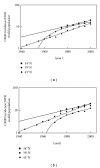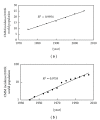Worldwide increasing incidences of cutaneous malignant melanoma
- PMID: 22007306
- PMCID: PMC3191827
- DOI: 10.1155/2011/858425
Worldwide increasing incidences of cutaneous malignant melanoma
Abstract
The incidence of cutaneous malignant melanoma (CMM) has been increasing at a steady rate in fair-skinned populations around the world for decades. Scientists are not certain why CMM has been steadily increasing, but strong, intermittent UVB (290-320 nm) exposures, especially sunburn episodes, probably initiate, CMM, while UVA (321-400 nm) passing through glass windows in offices and cars probably promotes it. The CMM incidence may be increasing at an exponential rate around the world, but it definitely decreases with increasing latitude up to ~50°N where it reverses and increases with the increasing latitude. The inversion in the incidence of CMM may occur because there is more UVA relative to UVB for most of the year at higher latitudes. If windows, allowing UVA to enter our indoor-working environment and cars, are at least partly responsible for the increasing incidence of CMM, then UV filters can be applied to reduce the rate of increase worldwide.
Figures




References
-
- Environmental protection agency. Ultraviolet radiation and Melanoma Vol. IV: Appendix A—Assessing the risks of stratospheric ozone depletion. US EPA 400/1-87/001D. Table 4-1, p. 4-2, December 1987.
-
- Roush GC, Schymura MJ, Holford TR. Patterns of invasive melanoma in the Connecticut tumor registry. Is the long-term increase real? Cancer. 1988;61(12):2586–2595. - PubMed
-
- Doll R, Payne P, Waterhouse JAH, editors. Cancer Incidence in Five Continents, Vol. I. Geneva, Switzerland: Union Internationale Contre le Cancer; 1966.
-
- Doll R, Muir CS, Waterhouse JAH, editors. Cancer Incidence in Five Continents, Vol. II. Geneva, Switzerland: Union Internationale Contre le Cancer; 1970.
-
- Waterhouse J, Muir C, Correa P, Powell J, editors. Cancer Incidence in Five Continents, Volume III. Lyon, France: IARC; 1976. (IARC Scientific Publications No. 15).
LinkOut - more resources
Full Text Sources

